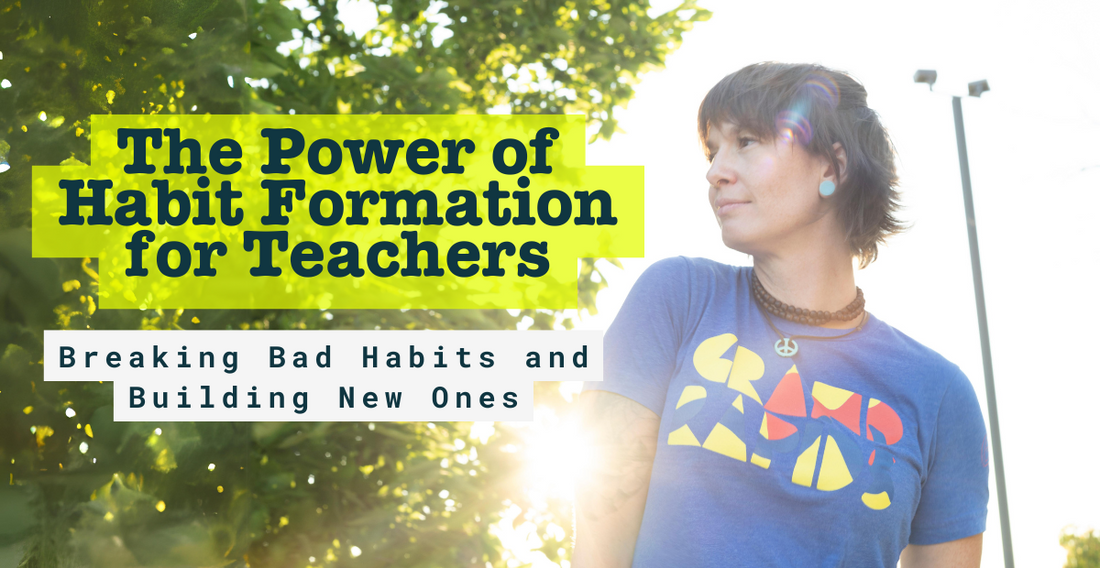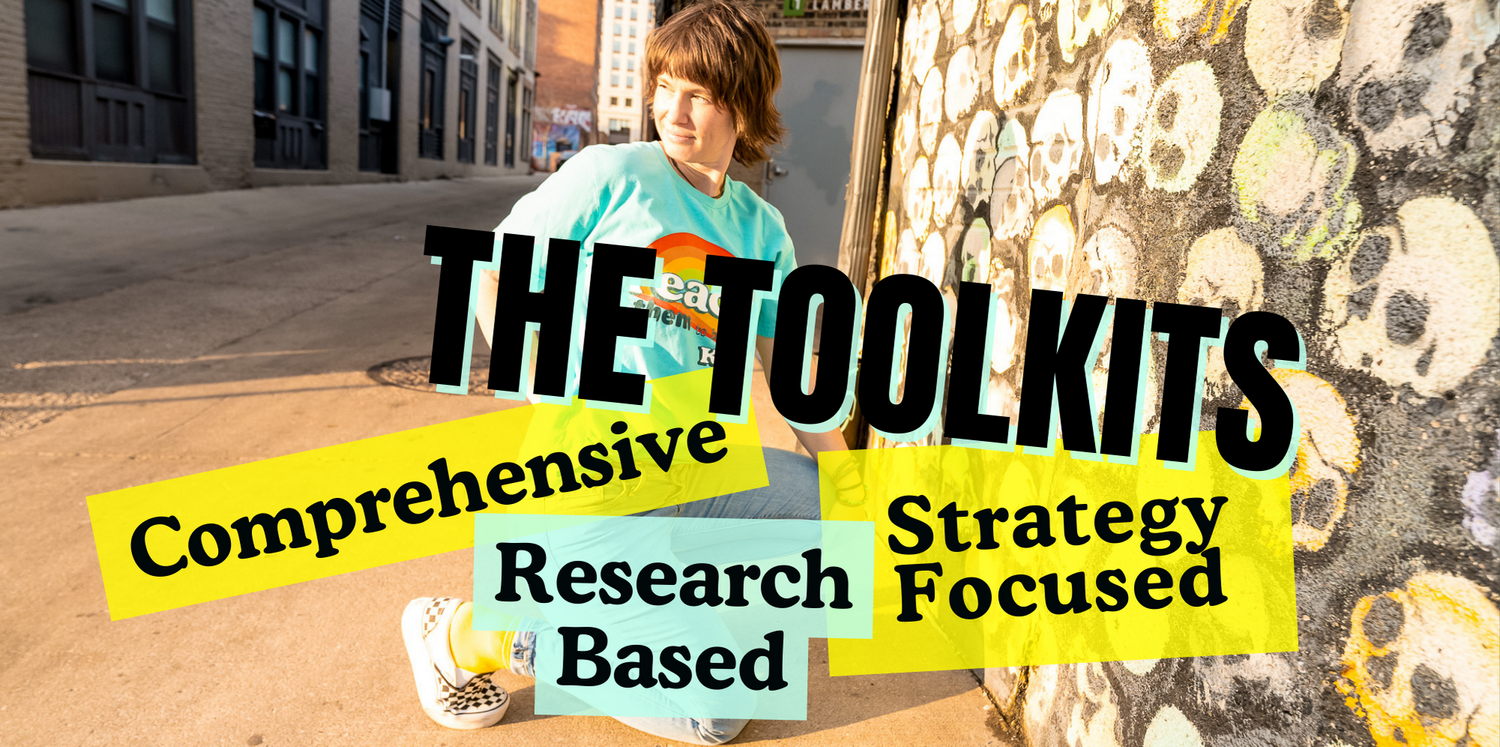
The Power of Habit Formation for Teachers: Breaking Bad Habits and Building New Ones
Share
Teaching is an ever-evolving profession that demands continuous growth and adaptation. To thrive, you need to develop effective habits that enhance your teaching practices, classroom management, and overall well-being.
However, just as important as forming new, positive habits is the ability to break old, counterproductive ones.
In this blog post, we’ll explore the science of habit formation, why breaking bad habits is crucial, and strategies for developing new, beneficial habits that can impact your personal and professional life.
Understanding Habit Formation
Habits are automatic behaviors triggered by specific cues, repeated regularly until they become ingrained in our routine.
You may have experienced how habits can manifest in various ways, from the way you structure your lessons to how you interact with students.
The process of habit formation is rooted in a psychological pattern called the "habit loop," which consists of three main components:
- Cue: The trigger that initiates the behavior. This could be a specific time of day, an emotional state, or an environmental factor.
- Routine: The behavior itself, which is the habit you're trying to form or break.
- Reward: The positive reinforcement you receive from completing the behavior, which encourages repetition.
For example, you might develop the habit of checking your email first thing in the morning (cue) because it gives you a sense of control over your day (reward). Over time, this becomes an automatic routine.
The Importance of Breaking Bad Habits
In the context of teaching, bad habits can significantly hinder growth and effectiveness, which can contribute to burnout.
These habits might include procrastination in lesson planning, over-reliance on traditional teaching methods without considering students' diverse learning needs, or even neglecting self-care due to a demanding schedule.
Breaking these habits is crucial for several reasons:
- Enhancing Professional Development: Bad habits can stagnate your growth as a teacher. For instance, sticking to outdated teaching methods might limit your ability to engage students effectively, reducing their learning outcomes.
- Improving Classroom Management: Habits like reacting impulsively to student behavior can create a negative classroom environment. By breaking such habits, you can develop more thoughtful and constructive ways to manage your classroom. During coaching we intentionally approach this by replacing impulsive reactions with universal strategies that promote inclusion and foster trust.
- Promoting Work-Life Balance: You may often struggle with maintaining a balance between your professional and personal life. Bad habits like bringing work home or not setting boundaries can lead to burnout. Breaking these habits is essential for long-term career sustainability.
- Setting a Positive Example: You serve as role models for your students. Modeling the ability to change and grow by breaking bad habits can inspire students to adopt a growth mindset and embrace positive changes in their own lives.
Strategies for Breaking Bad Habits
Breaking a habit requires conscious effort and persistence. Here are some strategies that you can use to break bad habits effectively:
- Identify the Triggers: The first step in breaking a bad habit is to identify the cues that trigger it. During your first one on one meeting we spend 30 minutes discussing this. You want to really analyze the habits you have and be intentional. For example, if you tend to procrastinate on grading, notice what leads to this behavior. Is it a lack of motivation, feeling overwhelmed, or simply not knowing where to start? Understanding the root cause can help you address the issue more effectively.
- Replace the Habit: Instead of trying to eliminate a bad habit altogether, focus on replacing it with a more positive one. For instance, if you have a habit of checking your phone during class, replace this behavior with actively engaging with students or reviewing lesson plans. The key is to find a new routine that provides a similar intrinsic reward.
- Start Small: Breaking a habit doesn’t happen overnight. During coaching w start with small, manageable changes that lead to larger transformations. For example, if you want to stop working late into the evening, begin by setting a strict cutoff time for work activities, gradually moving it earlier until you achieve a more balanced schedule.
- Seek Support: Don’t hesitate to seek support from colleagues, mentors, or even students. Sharing your goals with others can provide accountability and encouragement. Support is an absolute necessity when breaking unhelpful habits. It's why rehabilitation programs have sponsors, fitness programs have coaches, and financial planners exist.
- Be Patient and Persistent: Breaking a habit takes time and effort. There will be setbacks, but it’s essential to remain patient and persistent. Celebrate small victories along the way and remind yourself of the long-term benefits. It's helpful to have others you can celebrate with along the way, so don't forget to include friends or colleagues.

Forming New, Positive Habits
While breaking bad habits is important, forming new, positive habits is equally crucial for teachers. Positive habits can enhance teaching effectiveness, improve student outcomes, and contribute to overall job satisfaction. Here’s how you can develop new habits that stick:
- Set Clear Goals: Define specific, measurable, and achievable goals that align with your desired habit. For instance, if you want to incorporate more technology into your lessons, set a goal to include one new tech tool in your lessons each week. In coaching two weeks is dedicated to setting a goal that is achievable, impactful and directly related to the problem you are trying to solve.
- Create a Routine: Consistency is key to habit formation. Establish a routine that integrates the new habit into your daily or weekly schedule. For example, if your goal is to provide timely feedback to students, allocate specific times each day for grading assignments.
- Use Positive Reinforcement: Reward yourself for sticking to your new habit. This could be something simple like treating yourself to a favorite snack after completing a task or taking a short break. Positive reinforcement helps reinforce the habit loop and makes it more likely that the behavior will stick.
- Reflect and Adjust: Regularly reflect on your progress and make adjustments as needed. If a particular strategy isn’t working, don’t be afraid to try something new. Reflection helps you stay on track and ensures that the habits you’re forming are genuinely beneficial. In Meet the Needs coaching you get a 14 week reflection workbook to streamline this process and record your growth.
- Leverage Habit Stacking: Habit stacking involves pairing a new habit with an existing one to make it easier to remember and implement. For example, if you already have a habit of drinking coffee in the morning, you could use this time to review your lesson plans for the day, thereby creating a new productive habit.
Conclusion
Habit formation is powerful, it is why I made it a central focus of Meet the Needs Coaching. If you are looking to improve your professional practices and personal well-being you must learn how to create healthy and helpful habits.
By breaking bad habits and forming new ones, you can enhance your effectiveness, foster a positive classroom environment, and achieve a better work-life balance.
The process requires patience, persistence, and a willingness to reflect and adapt, but the long-term rewards are well worth the effort.
If you want direct support and accountability in habit formation, goal setting, and behavior prevention check out the Meet the Needs Coaching HERE









